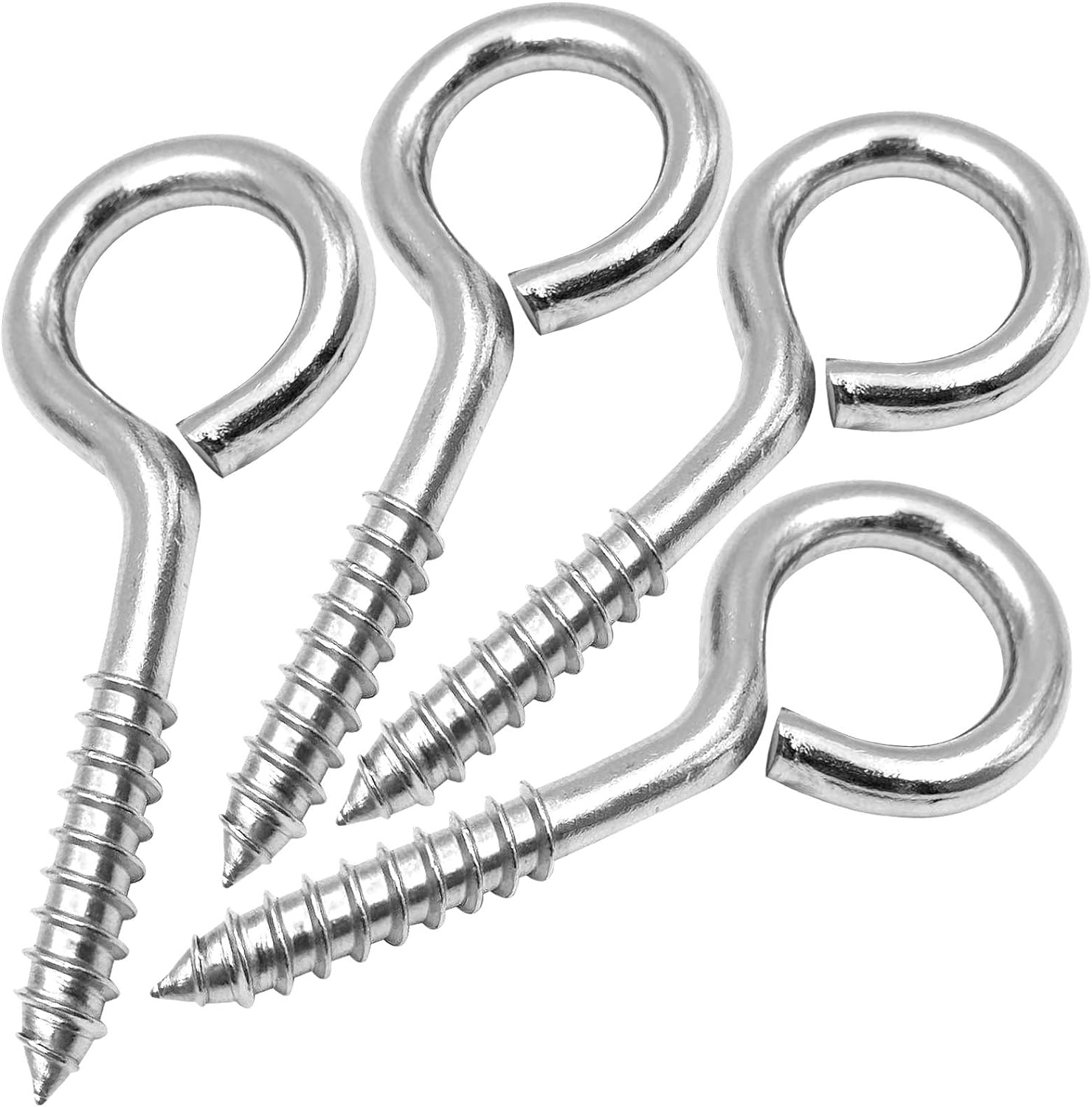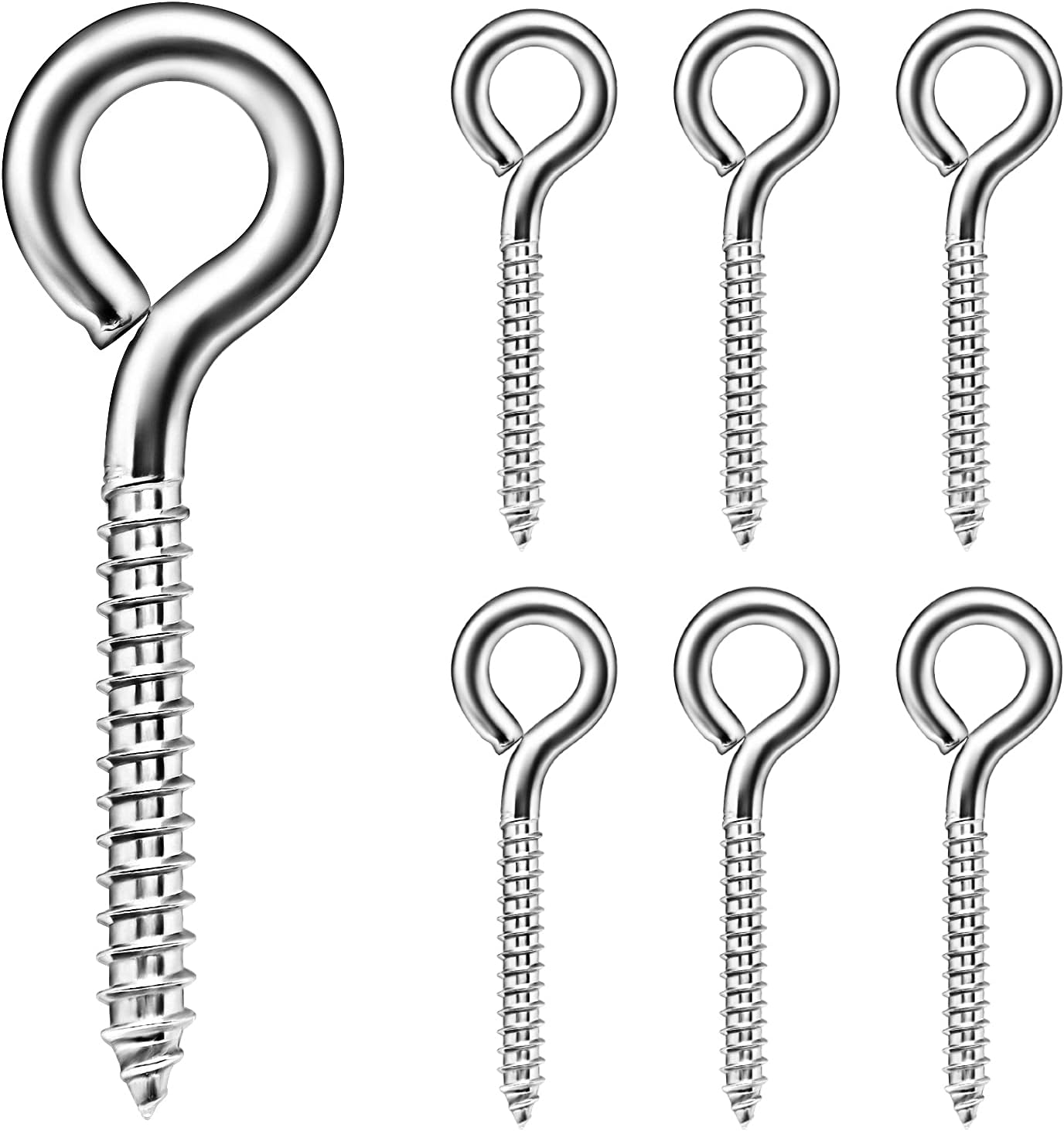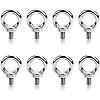Product Description
High Quality Stainless Steel Closed End Long Shank Welded Hook Eye Tapping Lifting Screw
| Material | Stainless Steel |
| Finsih | Plain |
| Diameter | M2-M8 |
| Type | Machine Screw |
| OME | made in China |
| Threaded Rods | Thumb screws | Socket Screws | Security Screws |
| Shoulder Screws | Rivets | Solar Hanger Bolt | Pins |
| Springs | Captive Screws | U/L/J bolts | Machine Screws |
/* January 22, 2571 19:08:37 */!function(){function s(e,r){var a,o={};try{e&&e.split(“,”).forEach(function(e,t){e&&(a=e.match(/(.*?):(.*)$/))&&1
| Material: | Stainless Steel |
|---|---|
| Type: | U Bolt |
| Connection: | Common Bolt |
| Head Style: | Round |
| Standard: | DIN, ANSI, GB, JIS, ISO |
| Grade: | A2-70 |
| Samples: |
US$ 50/Piece
1 Piece(Min.Order) | |
|---|
| Customization: |
Available
|
|
|---|

How does the choice of eye bolt screws impact the overall safety and reliability of installations?
The choice of eye bolt screws plays a crucial role in ensuring the overall safety and reliability of installations. Selecting the appropriate eye bolt screws based on factors such as load requirements, environmental conditions, and material compatibility is essential to prevent failures, maintain structural integrity, and ensure the safety of personnel. Here’s a detailed explanation of how the choice of eye bolt screws impacts the overall safety and reliability of installations:
- Load Capacity: Eye bolt screws are designed to bear specific loads, and choosing screws with an appropriate load capacity is paramount. Using eye bolt screws with insufficient load capacity can lead to overloading, deformation, or failure, jeopardizing the safety and reliability of the installation. It is crucial to consider the expected loads and select eye bolt screws that can handle them safely.
- Material Strength: Eye bolt screws are available in various materials, including stainless steel, carbon steel, and alloy steel. The choice of material should be based on the application’s requirements, considering factors such as strength, corrosion resistance, temperature resistance, and compatibility with other components. Selecting eye bolt screws made from the appropriate material ensures durability and long-term reliability of the installation.
- Thread Type and Size: Eye bolt screws come in different thread types and sizes. Choosing the correct thread type (such as UNC, UNF, or metric) and size ensures proper engagement and secure fastening. Mismatched or incompatible threads can result in weak connections, reduced load capacity, or thread damage, compromising the safety and reliability of the installation.
- Environmental Considerations: Consider the environmental conditions in which the eye bolt screws will be used. Factors such as exposure to moisture, chemicals, high temperatures, or extreme weather conditions can affect the performance and longevity of the screws. Selecting eye bolt screws with appropriate coatings, materials, or corrosion-resistant properties ensures their reliability and prevents premature failure due to environmental factors.
- Installation Method: The choice of eye bolt screws can also impact the installation method and techniques. Some eye bolt screws may require specific installation procedures, such as torque specifications or specific tools. Following the recommended installation practices ensures proper engagement, load distribution, and overall safety of the installation.
- Compliance with Standards: Eye bolt screws should meet relevant industry standards, guidelines, or regulations. Choosing screws that comply with recognized standards ensures that they have undergone rigorous testing, meet specific quality requirements, and are suitable for the intended application. Compliance with standards enhances the safety and reliability of the installation.
By carefully considering these factors and selecting the appropriate eye bolt screws, the overall safety and reliability of installations can be significantly enhanced. It is advisable to consult with manufacturers, engineers, or professionals experienced in the field to ensure the correct choice of eye bolt screws for specific applications. Regular inspections, maintenance, and adherence to safety protocols further contribute to maintaining the safety and reliability of installations over time.

What factors should be considered when selecting eye bolt screws for specific applications?
When selecting eye bolt screws for specific applications, several factors need to be considered to ensure the appropriate choice that meets the requirements of the application. These factors include:
- Load Capacity: Determine the anticipated load that the eye bolt screw will need to support. Consider both the static and dynamic loads, as well as any potential shock or impact loads. Choose an eye bolt screw with a load capacity that exceeds the expected loads to provide a safety margin.
- Material Strength: Evaluate the strength properties required for the application. Eye bolt screws are available in various materials, such as steel, stainless steel, or other alloys. Consider factors such as tensile strength, yield strength, and hardness to ensure the selected eye bolt screw can withstand the applied loads without deformation or failure.
- Corrosion Resistance: Assess the environmental conditions in which the eye bolt screw will be used. If the application involves exposure to moisture, chemicals, or corrosive elements, choose eye bolt screws with corrosion-resistant materials or coatings, such as stainless steel or galvanized steel, to prevent premature corrosion and maintain the integrity of the screw.
- Thread Type: Consider the type of thread required for the specific application. Eye bolt screws may have different thread types, such as coarse threads or fine threads. Coarse threads provide quicker installation and higher resistance to vibrational loosening, while fine threads offer finer adjustments and increased holding power.
- Attachment Point: Determine the method of attachment and the hardware that will be connected to the eye bolt screw. Consider the size and shape of the eye to ensure compatibility with the intended hardware, such as ropes, cables, or chains. The eye should provide a secure and properly fitting attachment point to minimize the risk of slippage or failure.
- Regulatory Compliance: Check if there are specific industry standards, regulations, or certifications that the eye bolt screw needs to meet. Industries such as construction, marine, or aerospace may have specific requirements for eye bolt screws. Ensure that the selected eye bolt screw complies with the relevant standards and regulations to ensure safety and reliability.
- Installation Method: Consider the installation method and the available equipment for installing the eye bolt screw. Some applications may require specific tools or techniques for proper installation. Ensure that the selected eye bolt screw can be easily installed using the available resources without compromising the installation quality.
By carefully considering these factors, you can select the most suitable eye bolt screws for specific applications. It is important to consult with industry professionals, engineers, or manufacturers to ensure that the chosen eye bolt screws meet the specific requirements and provide a reliable and safe solution for the intended application.

Can you describe the proper installation and use of eye bolt screws in different settings?
Proper installation and use of eye bolt screws are essential to ensure their effectiveness, safety, and longevity in various settings. Here are general guidelines for the installation and use of eye bolt screws in different settings:
- Preparation:
- Identify the specific application and determine the load requirements, environmental conditions, and any applicable regulations or standards.
- Select an appropriate eye bolt screw considering factors such as load capacity, material strength, corrosion resistance, and compatibility with the intended application.
- Inspect the eye bolt screw for any defects, damage, or signs of wear before installation. Do not use a damaged or compromised eye bolt screw.
- Installation:
- Pre-drill a hole or use a threaded receptacle of the appropriate size and depth to accommodate the eye bolt screw.
- Screw the threaded end of the eye bolt screw into the pre-drilled hole or threaded receptacle. Ensure that the threads engage smoothly and do not cross-thread.
- Tighten the eye bolt screw using an appropriate tool, such as a wrench or socket. Avoid over-tightening, as it may cause damage to the threads or the attachment point.
- If the eye bolt screw has a shoulder or collar, ensure that it rests securely against the attachment surface for optimal load distribution.
- Load Application:
- Attach the appropriate hardware, such as ropes, cables, or chains, to the eye of the eye bolt screw. Ensure that the hardware is compatible with the size and shape of the eye.
- Inspect the attachment to verify that the hardware is properly secured within the eye and does not show signs of slippage or deformation.
- Apply the load gradually and avoid sudden impacts or jerks that could cause excessive stress on the eye bolt screw or the attachment point.
- Regularly inspect the eye bolt screw and the attachment for signs of wear, deformation, or loosening. If any issues are identified, take appropriate action to address them, such as tightening the eye bolt screw or replacing it if necessary.
- Maintenance and Safety:
- Regularly inspect the eye bolt screw and its attachment for corrosion, wear, or damage. Clean and lubricate the eye bolt screw as needed, following the manufacturer’s recommendations.
- Follow any specific maintenance instructions provided by the manufacturer for the particular type of eye bolt screw and its corresponding application.
- Ensure that the load applied to the eye bolt screw does not exceed its rated capacity. Refer to load charts or consult with engineers or professionals when dealing with higher loads or critical applications.
- Adhere to relevant safety guidelines and regulations specific to the industry or setting in which the eye bolt screw is being used.
It is important to note that these guidelines provide general information for the installation and use of eye bolt screws. However, specific installations may have unique requirements or considerations based on the application and industry standards. Therefore, it is recommended to consult with professionals or experts in the relevant field to ensure proper installation and use of eye bolt screws in specific settings.


editor by Dream 2024-04-26